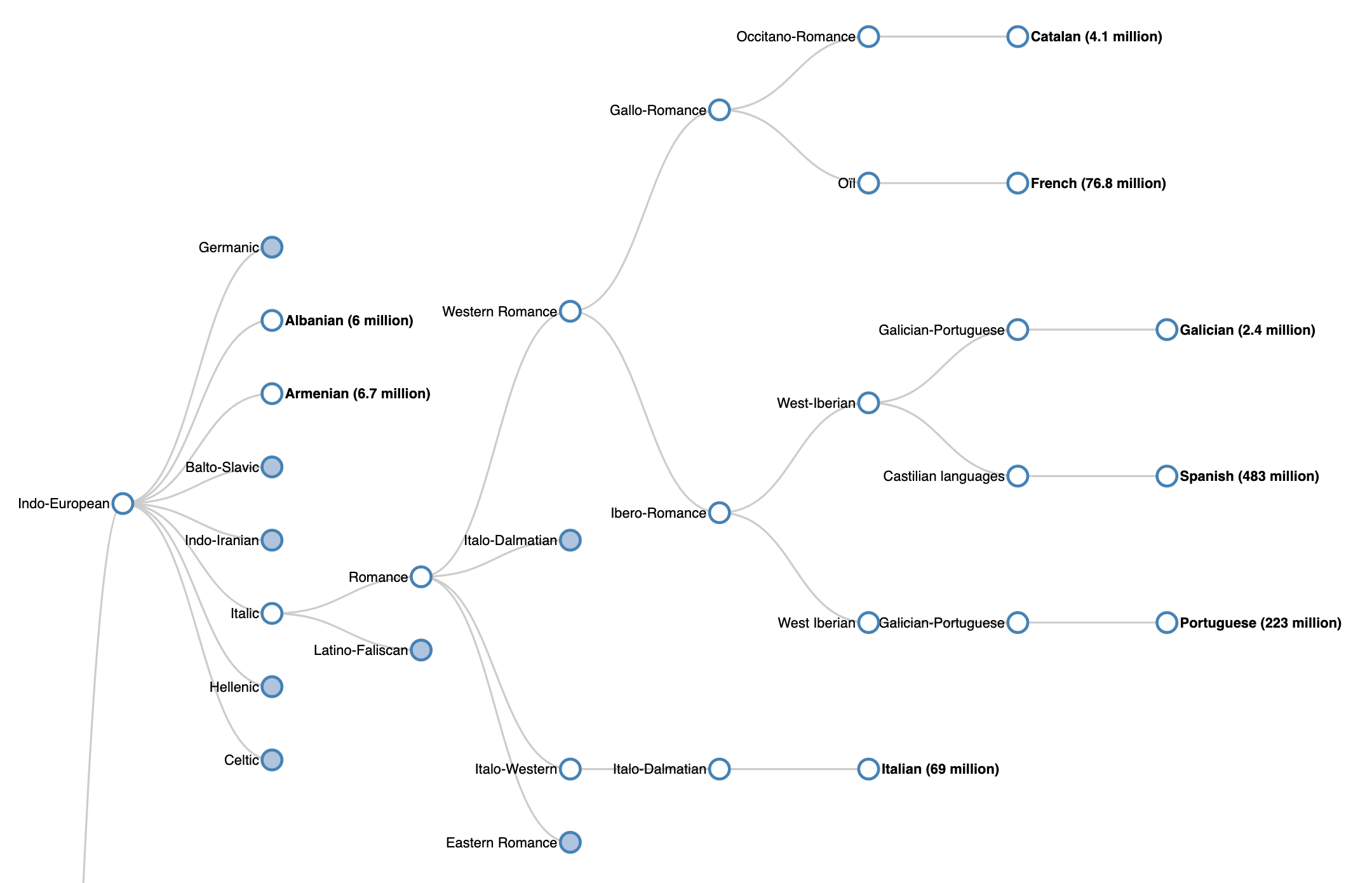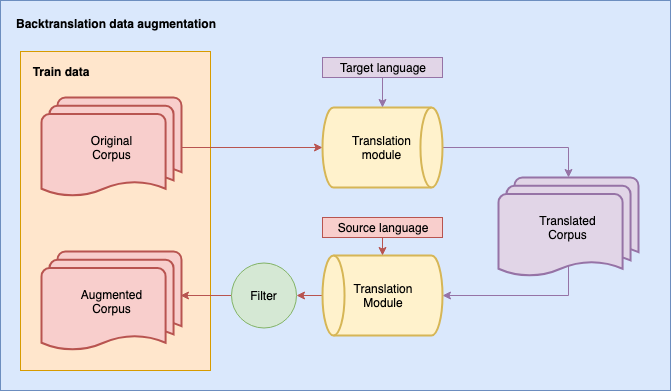We bet on it and it worked. This repository includes the scripts to train transformers (finetuneutils.py and torchutils.py) from Huggingface library with Pytorch. We load the data from module datautils.py. We prepared the main.py script to run the training and evaluation. Finally, we use the run_loop.py to run iteratively all the configuration for BET experiment: datasets, transformers and different augmentation languages.
We clustered all the Google Translation languages into the related language families based on the information provided in the Wikipedia info-boxes. The Romance branch is illustrated in the following figure.
The bold values in the table show how BET increased the performance. "all" stands for backtranslation from all the languages in our set. We also report the top-performing languages too.
| Model | Data | Accuracy | F1-score | Precision | Recall |
|---|---|---|---|---|---|
| BERT | baseline | 0.802 | 0.858 | 0.820 | 0.899 |
| BERT | all | 0.824 | 0.877 | 0.819 | 0.945 |
| BERT | Spanish | 0.835 | 0.882 | 0.840 | 0.929 |
| XLNet | baseline | 0.845 | 0.886 | 0.868 | 0.905 |
| XLNet | all | 0.837 | 0.883 | 0.840 | 0.932 |
| XLNet | Japanese | 0.860 | 0.897 | 0.877 | 0.919 |
| RoBERTa | baseline | 0.874 | 0.906 | 0.898 | 0.914 |
| RoBERTa | all | 0.872 | 0.907 | 0.877 | 0.939 |
| RoBERTa | Vietnamese | 0.886 | 0.915 | 0.906 | 0.925 |
| ALBERT | baseline | 0.853 | 0.890 | 0.885 | 0.895 |
| ALBERT | all | 0.841 | 0.886 | 0.847 | 0.929 |
| ALBERT | Yoruba | 0.867 | 0.902 | 0.884 | 0.922 |
pip install -r requirements.txt
For now, cite ... ,
@article{jphabdibet,
title={BET: A Backtranslation Approach for Easy Data Augmentation in Transformer-based Paraphrase Identification Context},
author={Corbeil, Jean-Philippe and Abdi Ghavidel, Hadi},
journal={arXiv preprint},
year={2020}
}
Some parts of the code were inspired by HuggingFace Transformers Implementations.

